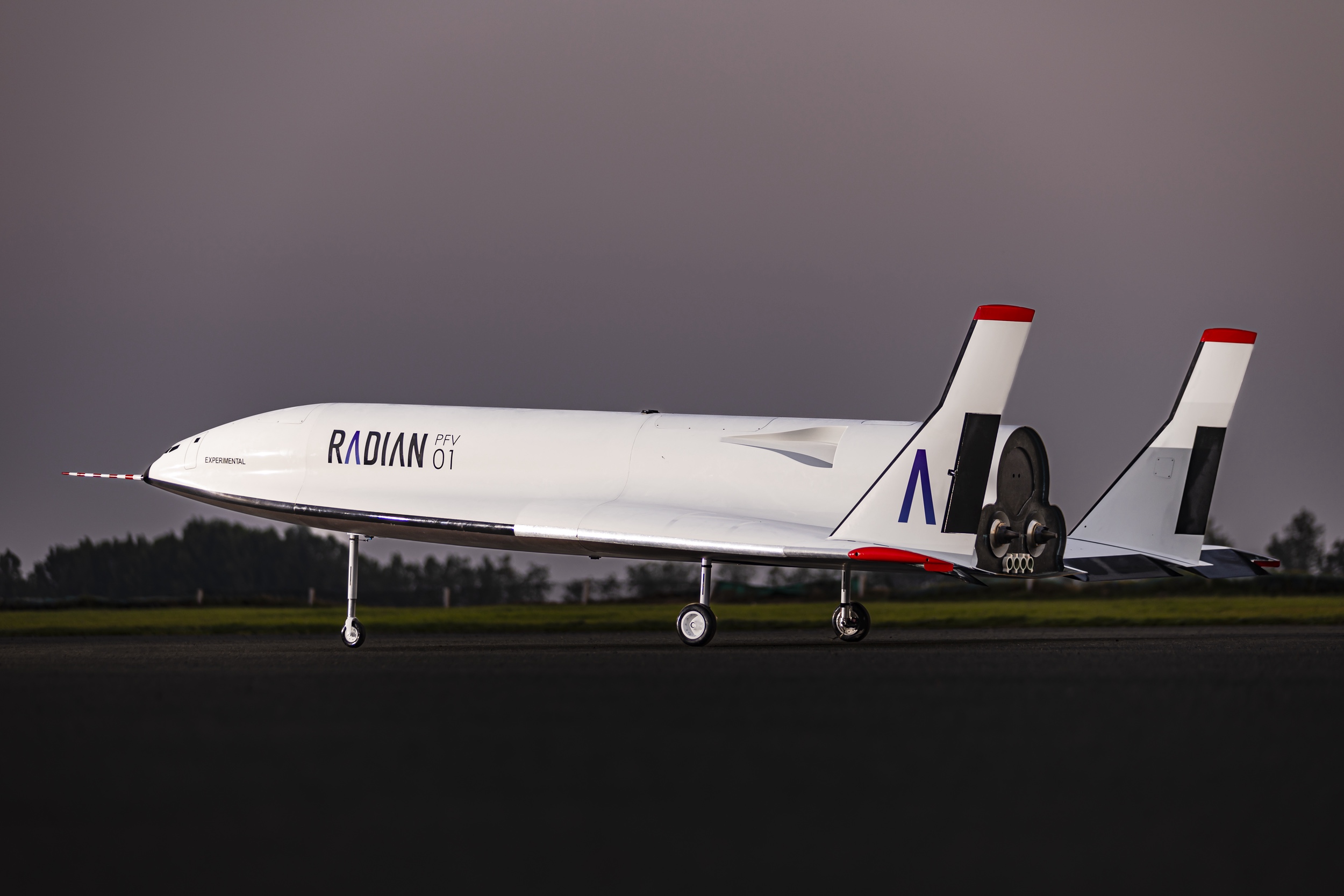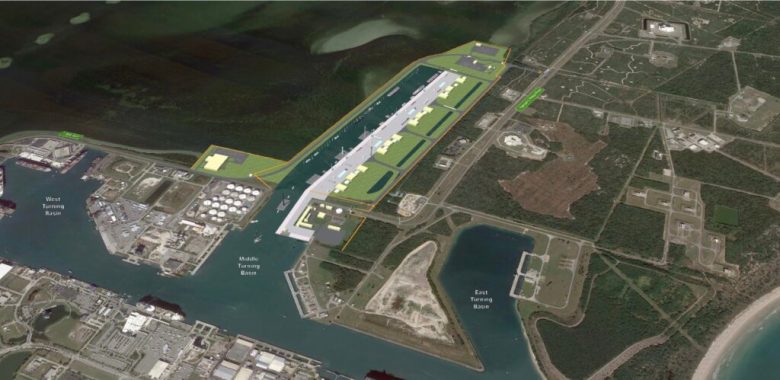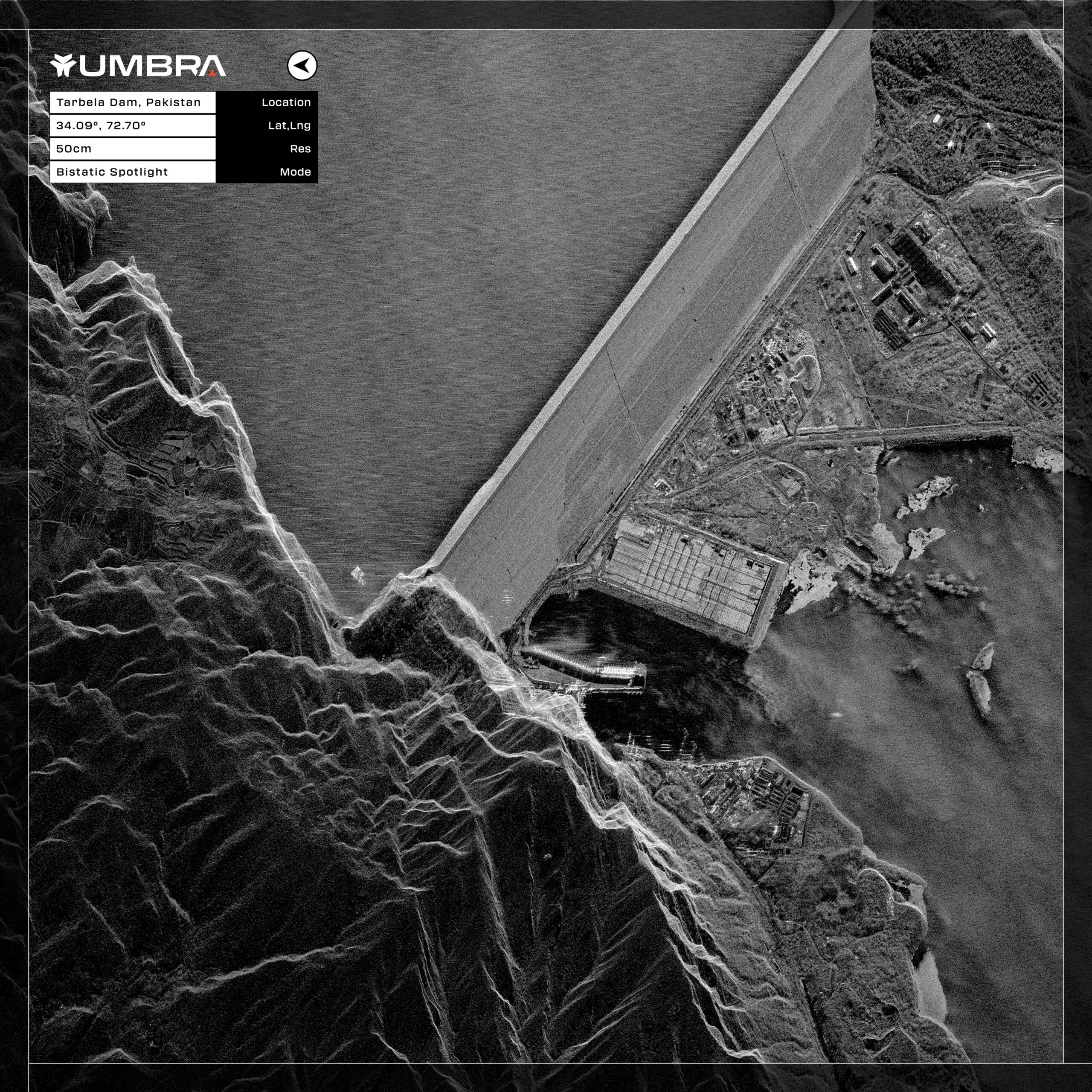WASHINGTON — Radian Aerospace, a company with ambitions to develop a reusable orbital spaceplane, has started flight tests of a prototype vehicle.
The Seattle-based company announced Sept. 25 that it performed an initial series of taxi tests of a prototype flight vehicle it calls PFV01 at an unidentified airport in Abu Dhabi in the United Arab Emirates. The tests included what it called “short hops” by the vehicle as it tested its handling characteristics for takeoff and landing.
PFV01 is designed to test the aerodynamics of the company’s proposed Radian One, a spaceplane that would take off horizontally using a rail sled system more than three kilometers long and reach orbit using rocket engines before returning to a runway landing. The vehicle, as currently designed, could carry up to five people and 2,270 kilograms of cargo to low Earth orbit and return with up to 4,540 kilograms of cargo.
Radian has already done extensive computer modeling and wind tunnel testing of the design, said Livingston Holder, chief technology officer and co-founder, in an interview. “But, we wanted to get a system in the air to see if the analytical work done to date matches our predictions.”
The runway tests, he said, confirmed those models. “It’s an important step,” he said, “validating that the analytical models that we’re using match what we’re seeing in real life.”
The company performed the tests in Abu Dhabi with the support of an unnamed partner there. The airfield where the tests took place was a “good, permissive environment,” Holder said, that gave the company access daily.
Radian largely avoided export control issues with doing the tests there since PFV01, powered by two jet engines, did not contain any space-specific technologies like rocket engines that would have been in the purview of the International Traffic in Arms Regulations (ITAR). “We’re keeping this to the airplane side of things because the airplane part makes it easier from an ITAR standpoint,” he said of the tests.
The next phase of testing will involve moving to another airfield in the region with a longer runway, enabling more sustained flights to test handling of the vehicle. “We’ve learned enough that we can start opening the envelope of performance,” Holder said. He didn’t provide a schedule for those tests, but those could involve the same PFV01 vehicle or a modified version to test different configurations.
Radian performed the PFV01 taxi tests while doing other work on the design of the spaceplane. That has included new tests of the thermal protection system the company has developed for the vehicle as well as production of a propellant test tank using composites.
“We’re really pleased with how things have been going,” Holder said of the overall work on the spaceplane, with no major surprises during development of its key technologies. “We’re making predictable progress toward our end results.”
Radian, which raised a $27.5 million seed round in early 2022, is working on its next funding round, but he said it was premature to discuss details about it. He said the company has had good discussions with undisclosed potential customers interested in the ability of the vehicle to take cargo both to orbit and back. That has included both signing letters of intent as well as converting those letters into contracts.
“It’s one thing for a company to have an idea: this is what your product is going to do, how it’s going to work, who it’s going to be beneficial for,” he said, “and then to try and find out, does the marketplace really believe what you believe? And the answer is, they do.”



